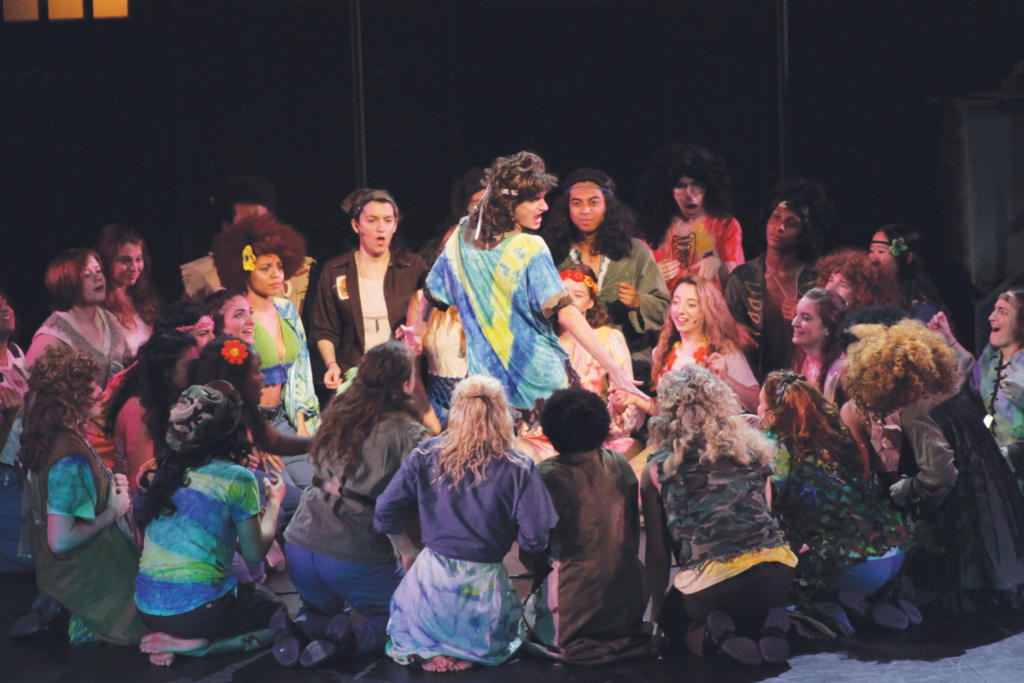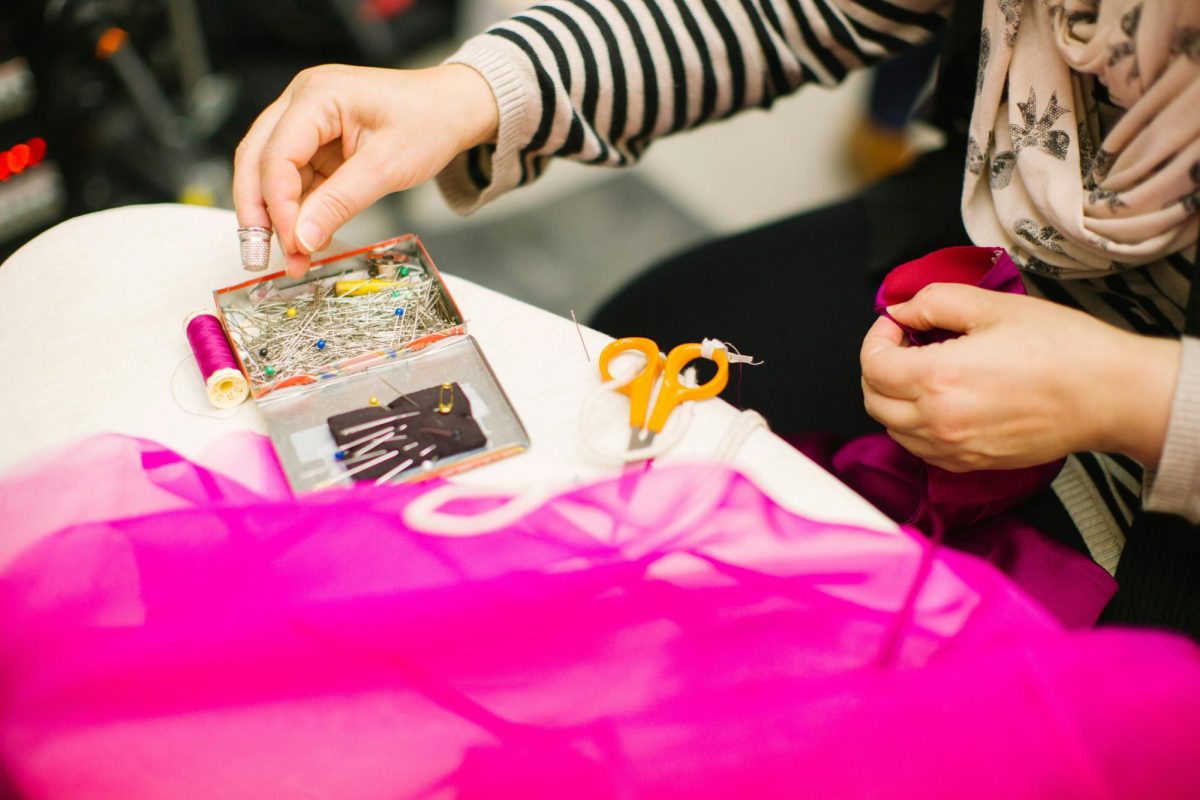
By Daniel Nguyen
There’s something about rock musicals – it’s kind of like being at a concert with a narrative. The cast simultaneously pieces together a constructed scheme that plays into their own performances. It’s a group medley of a singular vision. In the case of Hofstra’s department of Drama and Dance’s most recent production, a reimagining of the classic rock musical “Hair,” this singular vision was Cindy Rosenthal’s.
In the director’s note to “Hair,” Rosenthal explains, “In thinking about how to raise the stake for our 2017 production of ‘Hair,’ I imagined staging ‘Hair’ in a military prison.”
The interpretation has received diametric sentiments. Voices of dissent and approval seem to all agree that the Department of Drama’s production was anything but innocuous. Viewers entering the Adams Playhouse receive a play pamphlet informing them that “the performance of ‘Hair’ you will be seeing today has been devised and produced by some of our most exceptional incarcerated people.”
As the musical began, and before and after intermission, officers in uniform spoke to the audience directly and remained on the sidelines as the musical thundered on. Elements of scenic and costume design furthered this conceit, showcasing a stark prison background. Actors wore inmate clothing underneath their haphazard “flower power”-era clothing.
What seems like a fault of costume design instead augments the efficacy of Rosenthal’s conceit. Inmates wore tie-dye shirts, fringed t-shirts and camo credibly crafted by young inmates with limited resources. Interestingly, these makeshift costumes do more than recapitulate the production’s internal fiction, allowing fans of the original to draw thematic conclusions of their own.
In particular, Claude (Michael Leppore), the main protagonist of “Hair,” faced the draft. In his predicament, Claude straddled one of the numerous lines of opposition “Hair” touches on—the lives of hippies and those in the military.
In the majority of the character’s time on stage, Claude was seen in a loose green-blue tie-dye shirt. Looking closer though, viewers could see the wide edge of camo fabric woven into the shirt ends of his costume. As the musical progressed, similar costume details served to emphasize the dramatic tensions between contentious character changes.
Diametrically opposing issues riddled “Hair” with a vibrancy that translated perfectly to stage by the cast’s performance. With its consistently captivating and jaw-dropping moments, the musical’s classic songs like “Aquarius,” “Hare Krishna/Be-in” and “Electric Blues” astounded and benchmarked the musical with a calming familiarity.
“Where Do I Go?” shocked the audience with its irresistible pathos, made possible by Leppore’s plaintive vocal performance. “Walking in Space” transported viewers through a hallucinogenic journey and featured the best choral work of the entire musical. The song was sung entirely by “The Tribe,” a collective group central to the musical’s many choreographed sets. The hypnotic effect of “Walking in Space” was exalted by Haley Barna’s operatic overtures – a periodic vocal addition that dazzled while it soothed.
Finally, the powerful last performance, “The Flesh Failures/Let the Sunshine In,” left audiences punctured. As each inmate was pulled off stage, the final note of “Let the Sunshine In,” sung with extraordinarily visceral strength by Corey Oliver, haunted viewers long after they’d exit the theater.
The universal treatment of youth difficulties, Rosenthal’s artistic direction and the enormous dedication of cast and crew made this semester’s two-week, six-show production run of “Hair” a dazzling success. As the event summary states, “Hair remains as relevant as ever as it examines what it means to be a young person in a changing world.”






